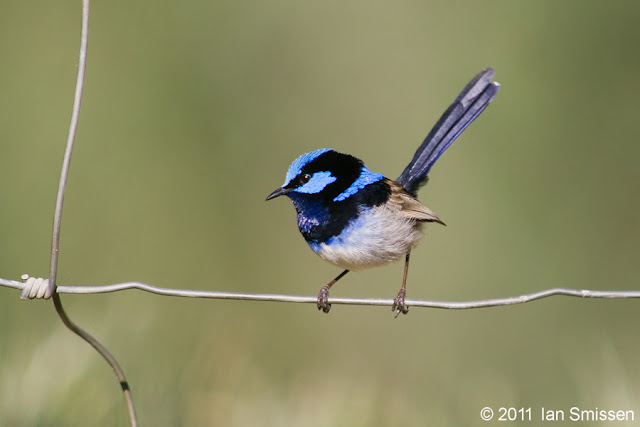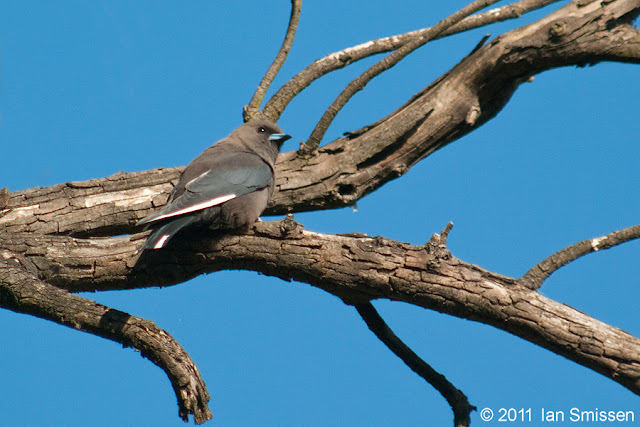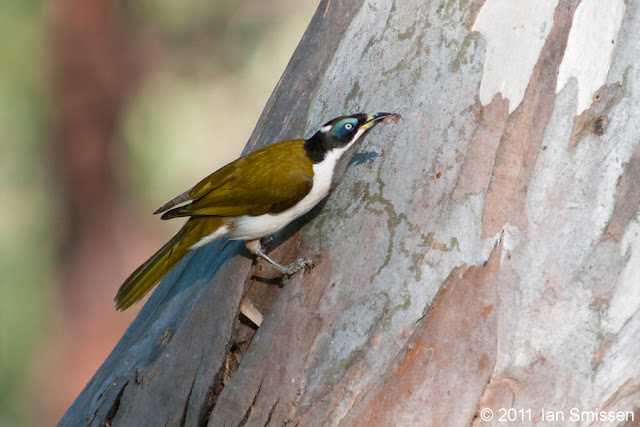We began the day with a drive through the northern part of the Whipstick Section of the Greater Bendigo NP, stopping at several locations where birds could be heard. This is a beautiful section of the park with mixed Eucalypt forest and Acacia understorey.
Lots of birds seen and heard but nothing particularly photogenic. It's always a challenge photographing birds in this sort of forest as they are mostly small, dull-coloured treetop-dwellers so are difficult to see and usually shaded by the foliage with bright sky in the background.
The afternoon was a different story. We went to Bells Swamp on the Maldon-Bridgetown Road (see map). I am not misusing the word "on" here as the road is currently closed due to flood damage from the rains earlier in the year but it now provides a fantastic pedestrian access through the middle of the swamp
offering views of the (currently) flooded River Red Gum forest
and close proximity to the birds - in particular the parrots that became more and more active as sunset approached. This pair of Musk Lorikeets was continuously in and out of a nest-hole.
There were also two species of Corella
and the ubiquitous Galahs
Large numbers of White-plumed Honeyeaters were doing their usual frantic rushing around but this one sat still just long enough for one frame.
As I was leaving just before sunset, I couldn't resist this shot of Brooms Lane.
For more:
The night before
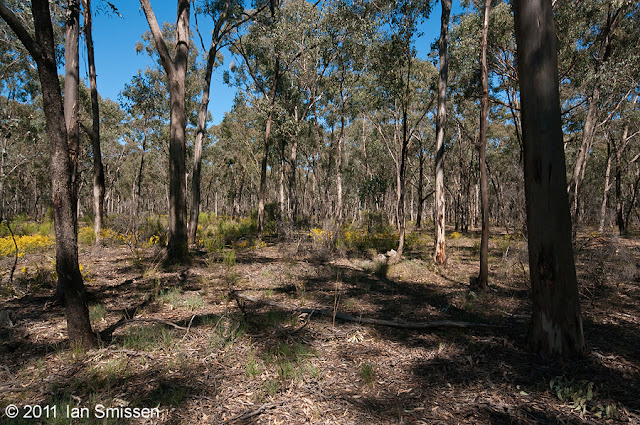 |
| Whipstick Section, Greater Bendigo NP |
Lots of birds seen and heard but nothing particularly photogenic. It's always a challenge photographing birds in this sort of forest as they are mostly small, dull-coloured treetop-dwellers so are difficult to see and usually shaded by the foliage with bright sky in the background.
The afternoon was a different story. We went to Bells Swamp on the Maldon-Bridgetown Road (see map). I am not misusing the word "on" here as the road is currently closed due to flood damage from the rains earlier in the year but it now provides a fantastic pedestrian access through the middle of the swamp
 |
| Maldon-Bridgewater Road, Bells Swamp |
offering views of the (currently) flooded River Red Gum forest
 |
| Bells Swamp |
and close proximity to the birds - in particular the parrots that became more and more active as sunset approached. This pair of Musk Lorikeets was continuously in and out of a nest-hole.
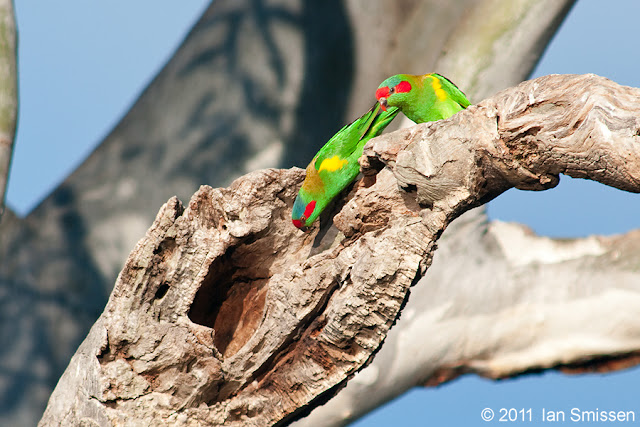 |
| Musk Lorikeet, Bells Swamp |
 |
| Musk Lorikeet, Bells Swamp |
and this one posed on a nearby branch long enough for a classic portrait.
 |
| Musk Lorikeet, Bells Swamp |
 |
| Little Corella, Bells Swamp |
 |
| Long-billed Corella, Bells Swamp |
and the ubiquitous Galahs
 |
| Galah, Bells Swamp |
Large numbers of White-plumed Honeyeaters were doing their usual frantic rushing around but this one sat still just long enough for one frame.
 |
| White-plumed Honeyeater, Bells Swamp |
As I was leaving just before sunset, I couldn't resist this shot of Brooms Lane.
 |
| Brooms Lane, Bells Swamp |
For more:
The night before










